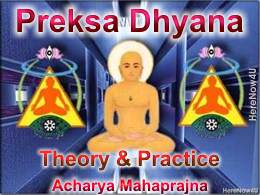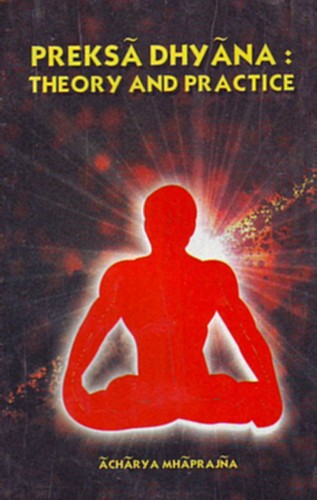
Relaxation (Kayotsarga): Essential Precondition for Meditation
For a successful session of meditational practice, it is necessary to relax the whole body and eliminate muscular tension. Relaxation and meditation are not identical, but the latter cannot be performed properly unless the body becomes motionless. As long as the body is tense and the muscles contracted, the free flow of energy (prana) is inhibited and mental steadiness and concentration is not possible. Kayotsarga is thus an essential precondition of meditational practice.
Kayotsarga is not only total relaxation of the body but also a real experience of self-awareness.
Exercise:
- After completing the recitation of ARHAM, maintain the posture, keeping the spine and neck straight but without stiffness and eyes closed softly. Relax all the muscles of your body and let it become limp.
- Concentrate your mind on each part of the body, one by one. Allow each part to relax by the process of auto-suggestion and feel that it has become relaxed.
- Starting with the big toe of the right foot, allow your mind to spread throughout the toe; suggest to the muscles and nerves to relax; experience the resulting relaxation and pass on to the other parts of the right leg - toes, sole, heel, ankle, upper part of the foot, calf muscle, knee, thigh and buttocks. In the same way, relax the left limb up to hip-joint.
- Next, relax the trunk from hip-joint to the neck; starting with the back and front of the lower abdomen and the upper abdomen going up to the ribs - front and back, the chest muscles, collar bone up to the neck muscles. Then relax both limbs from palms to the shoulders i.e. right hand - thumb, palm, wrist, lower arm, elbow, upper arm and shoulder; left limb - thumb and fingers to shoulders.
- Finally, relax the head from neck to scalp - throat, chin, jaws, lips, tongue, mouth, cheeks and all the other facial muscles, nose, eyes, ears, temples, forehead and scalp.
- Experience that the whole body is completely relaxed.
Retain the relaxed condition throughout the meditational session.
 Acharya Mahaprajna
Acharya Mahaprajna

